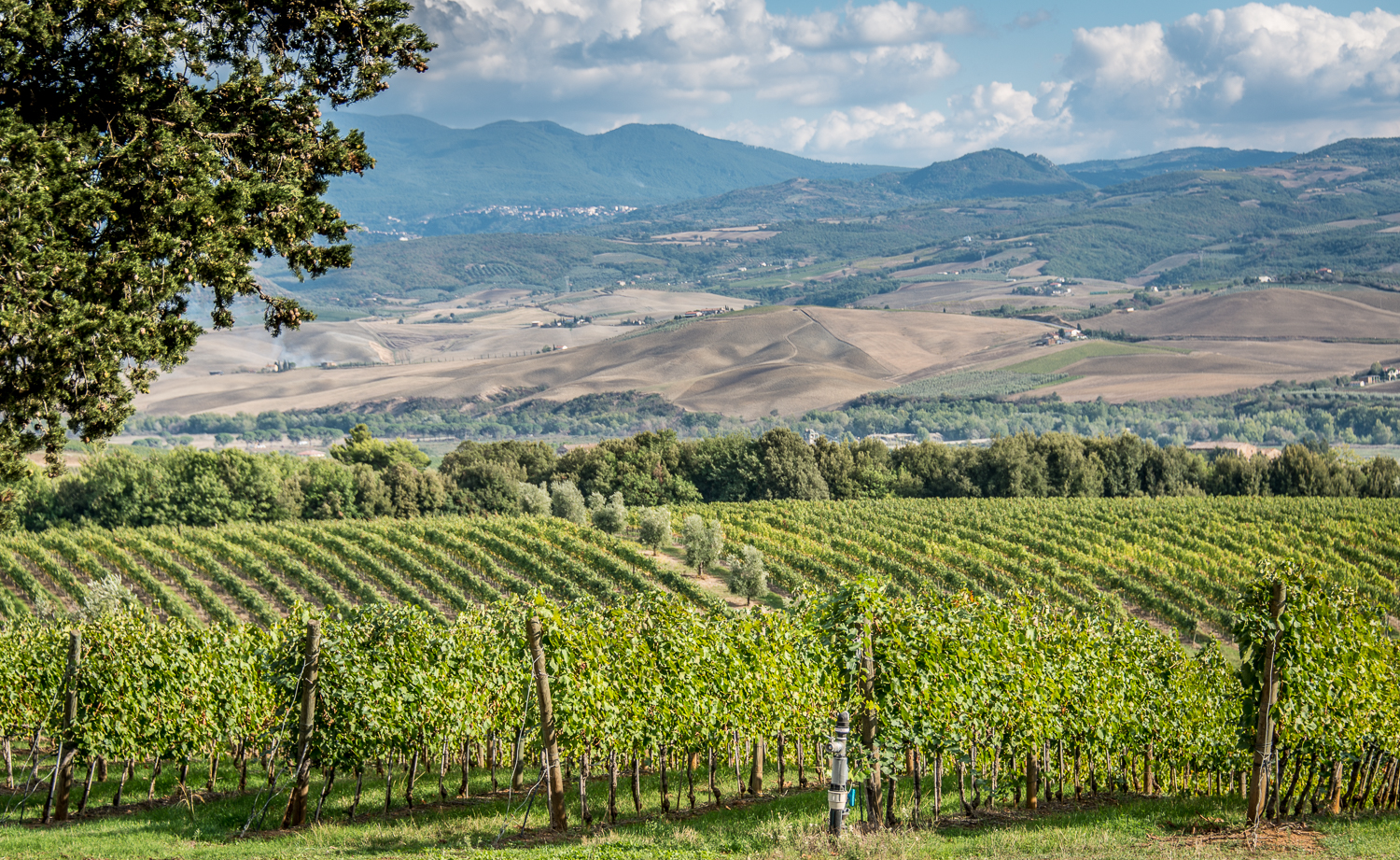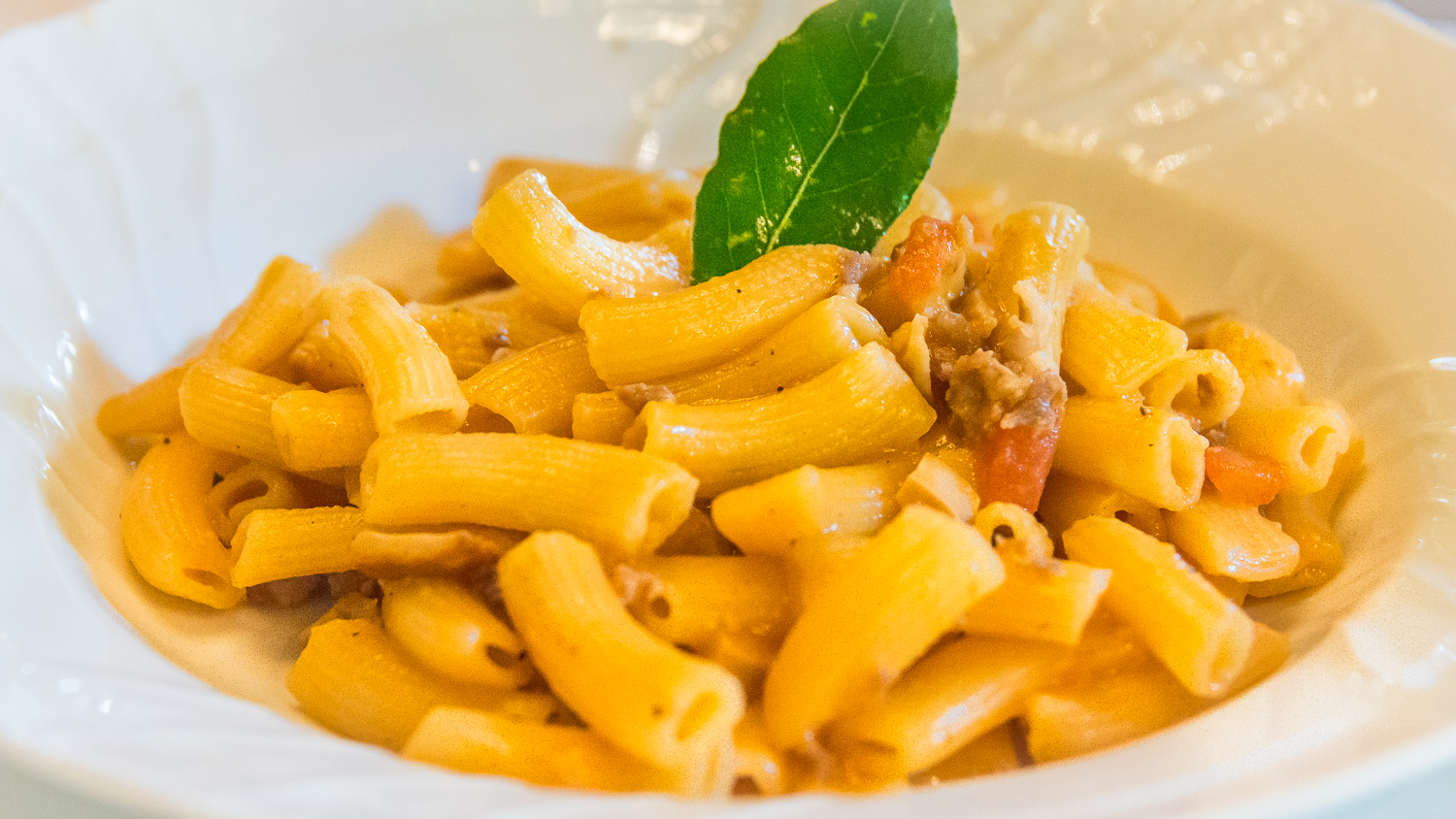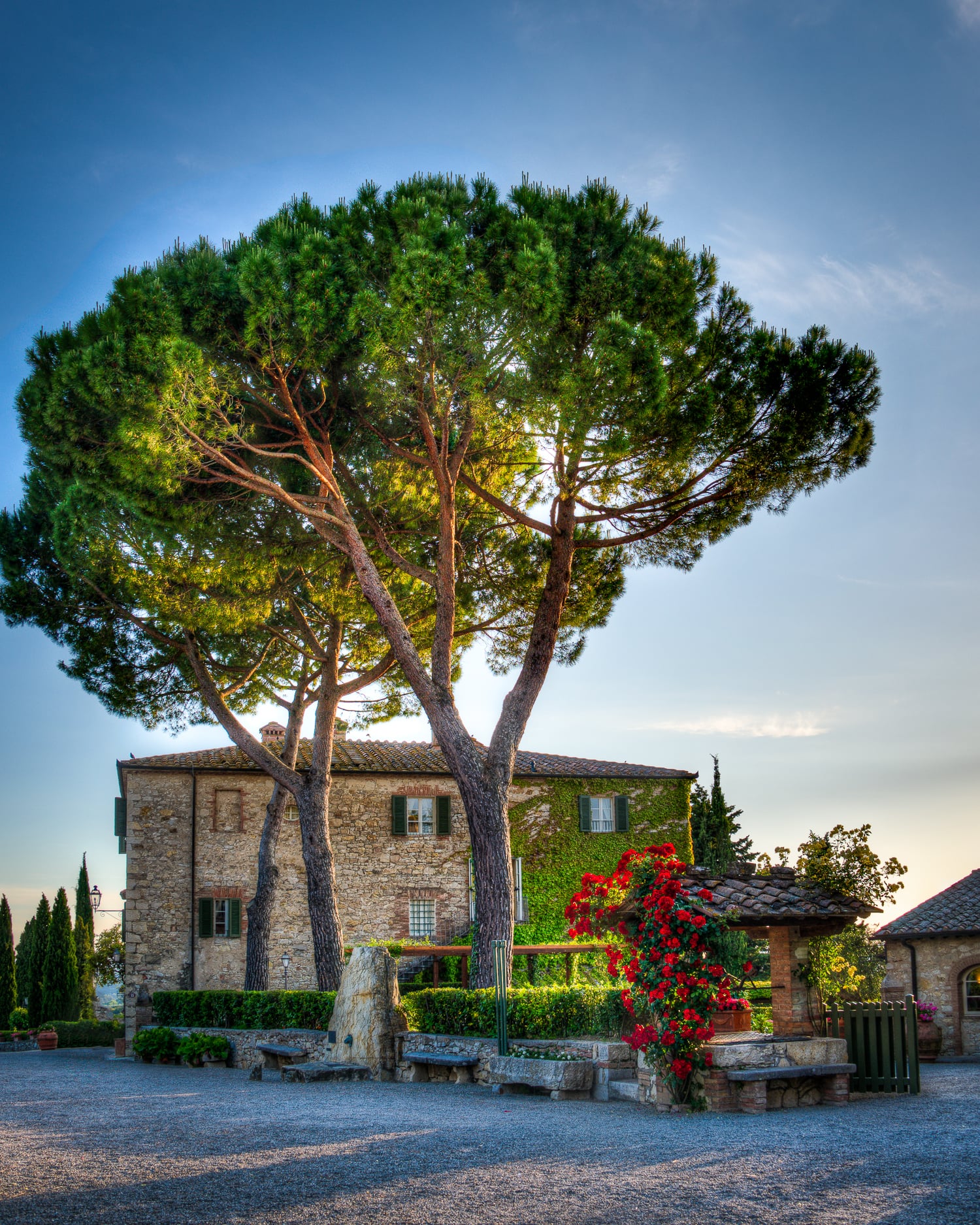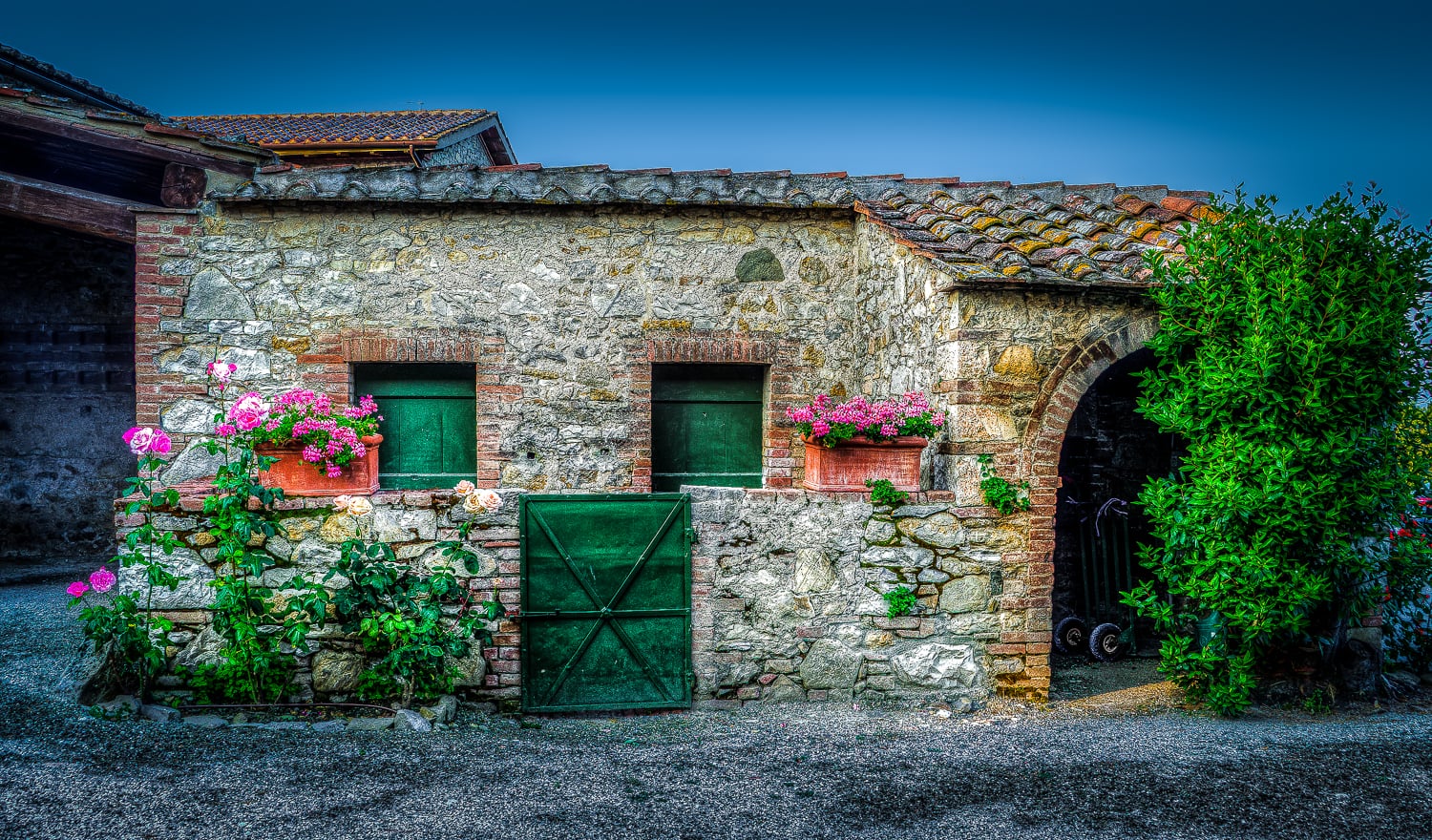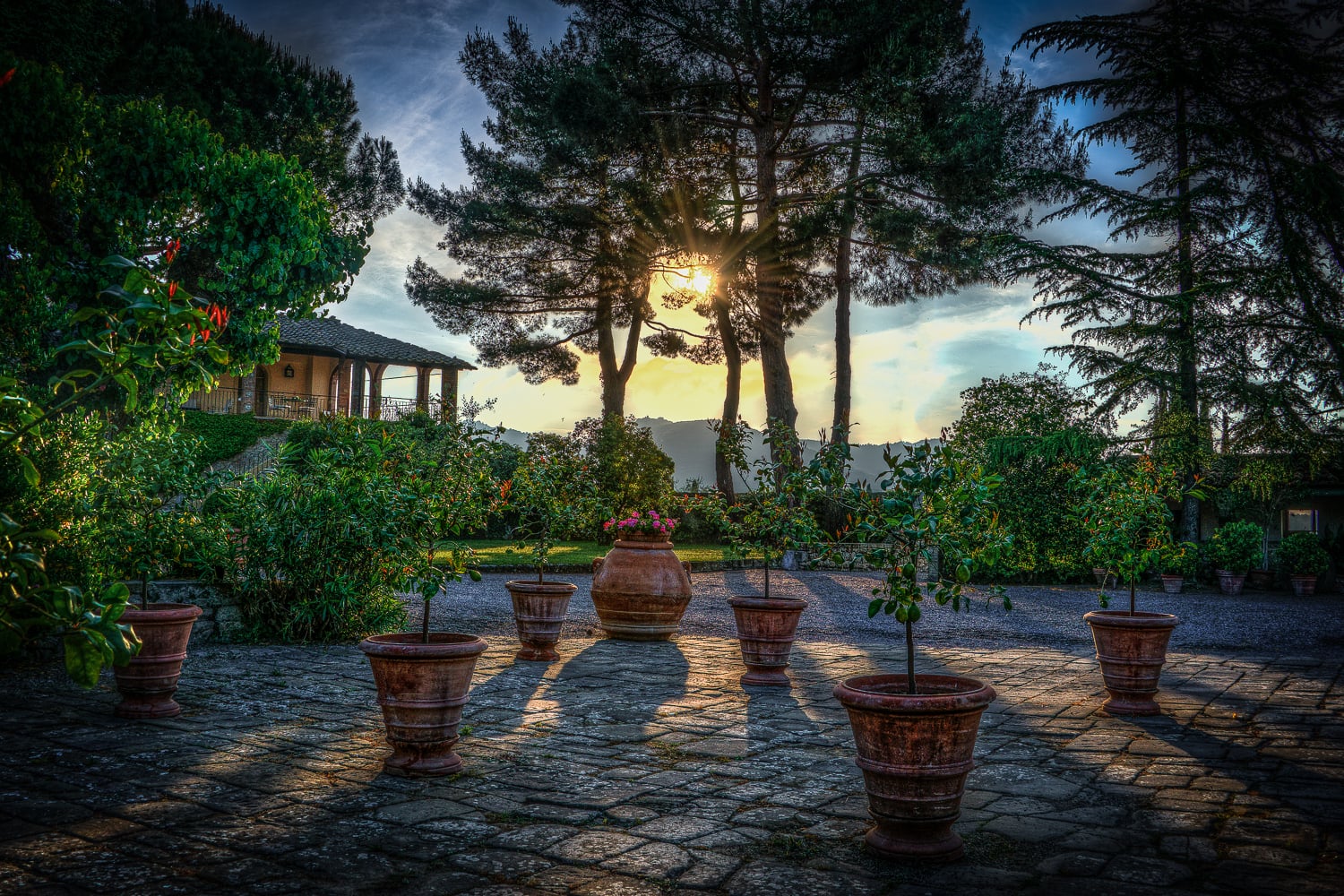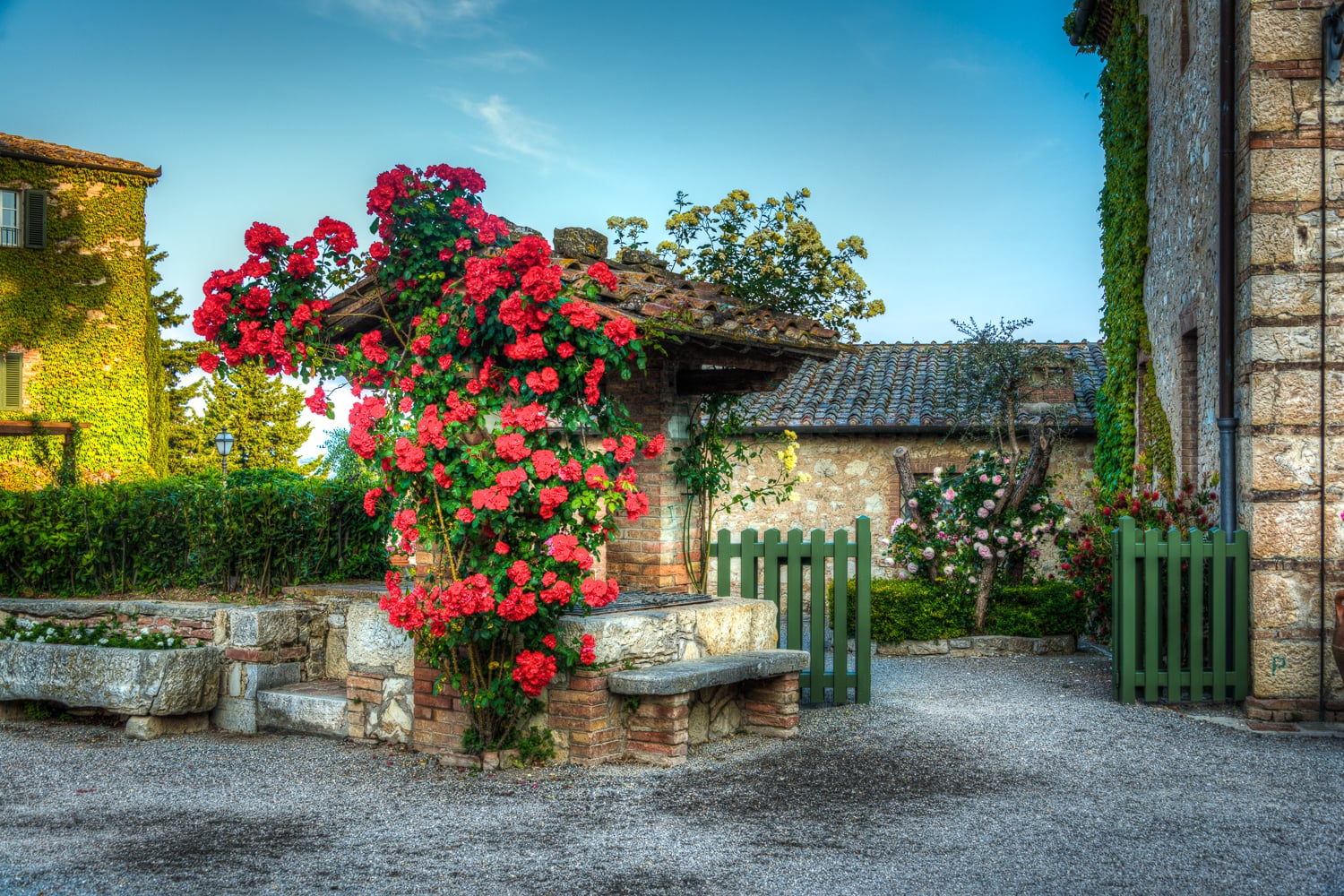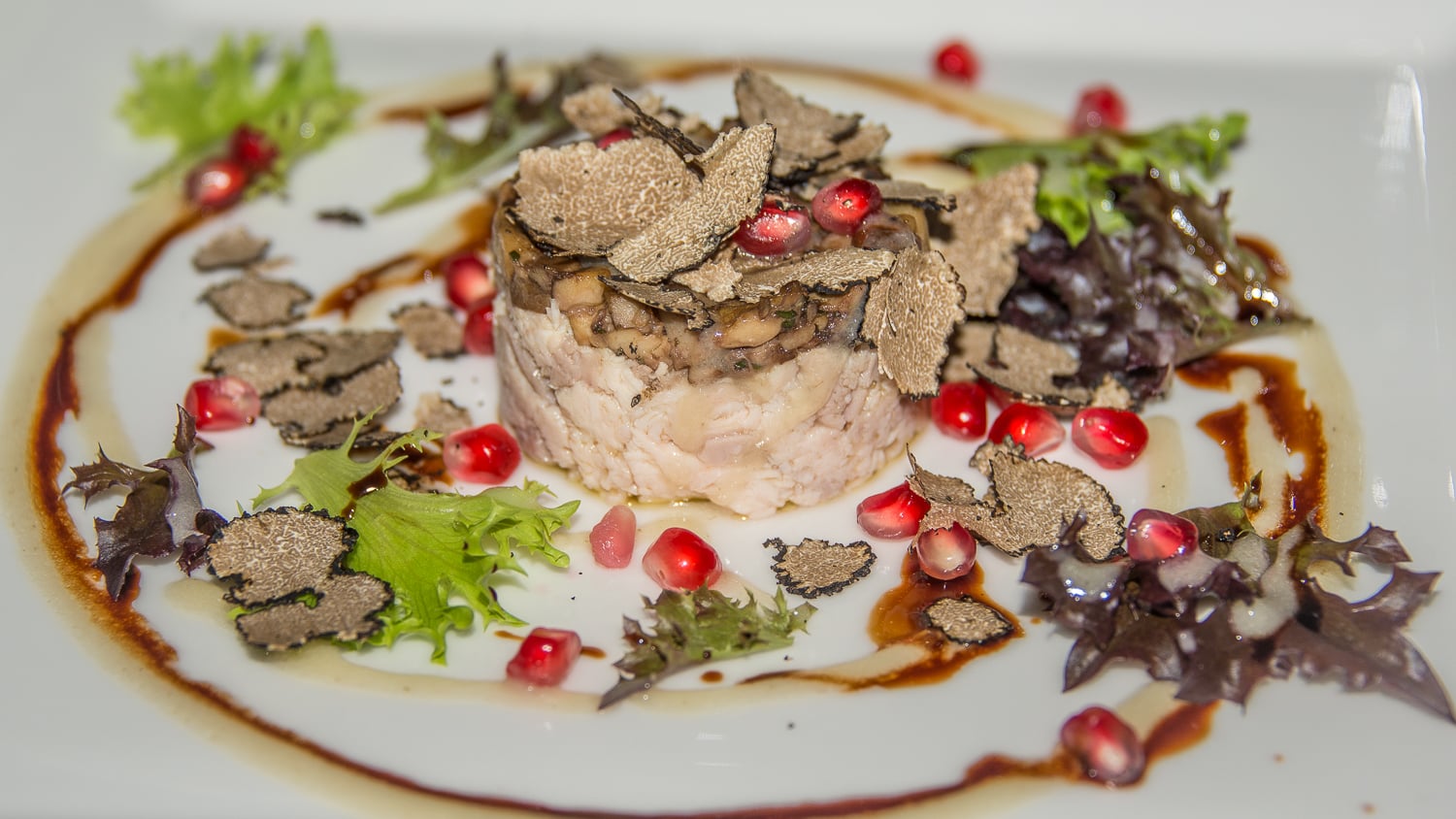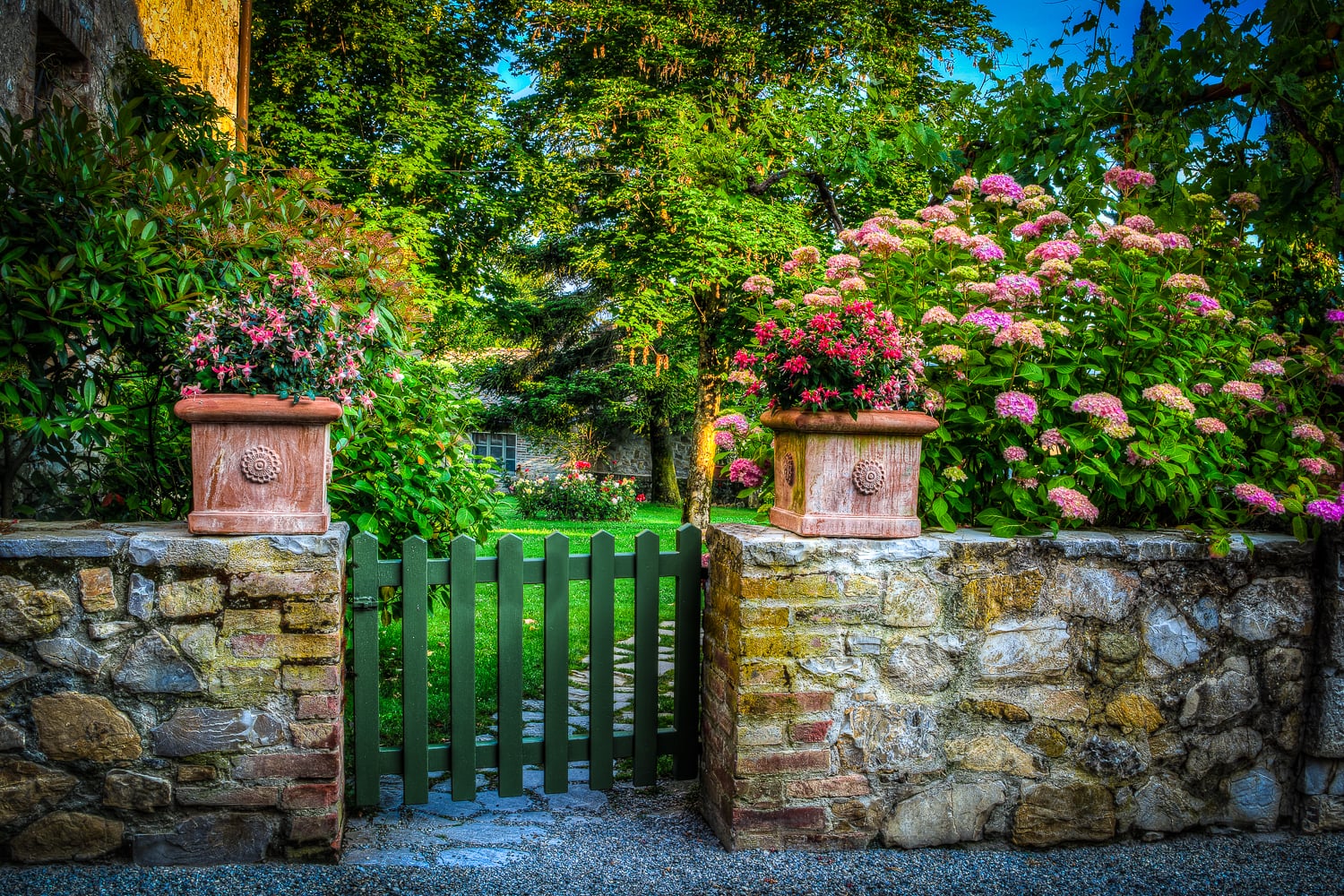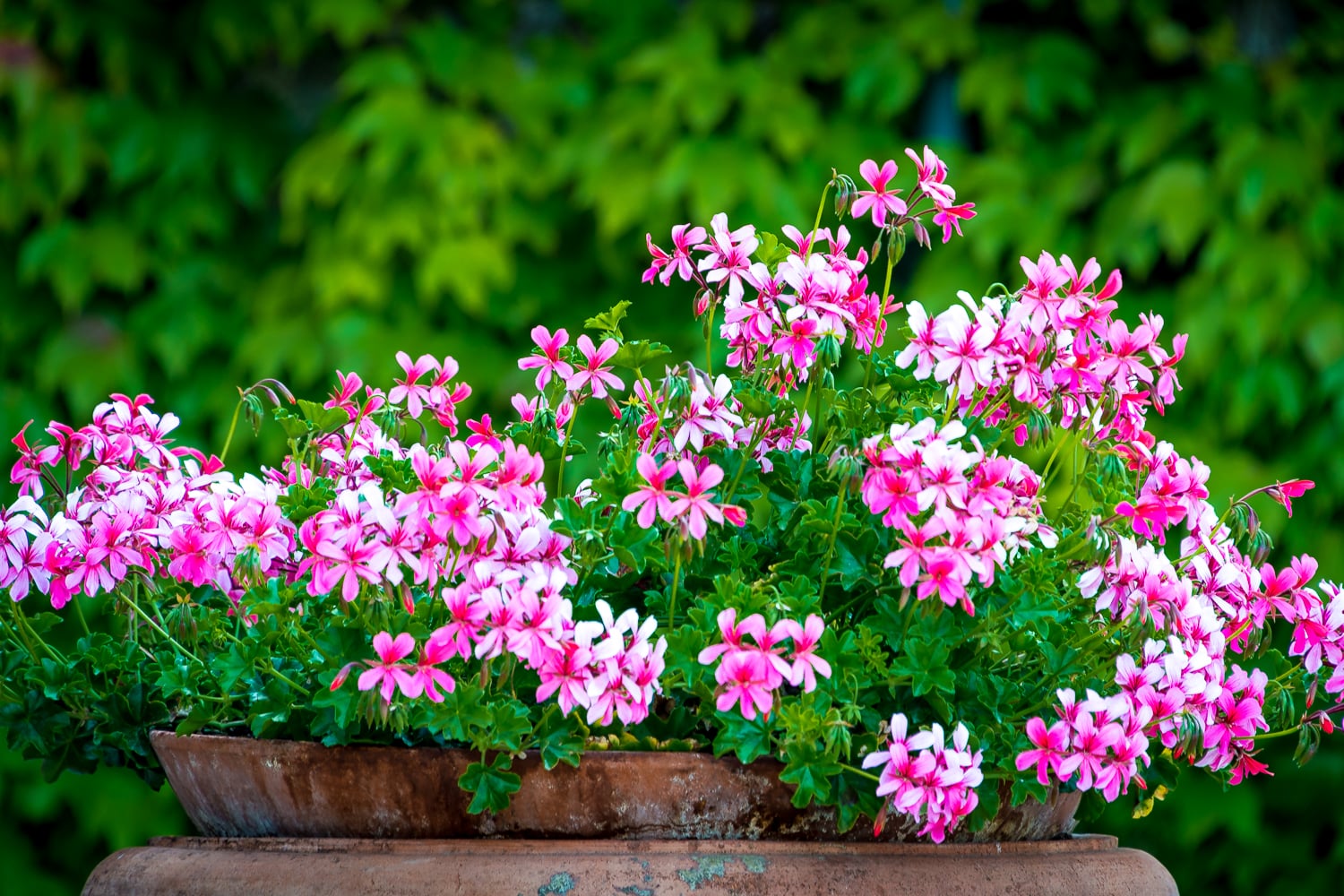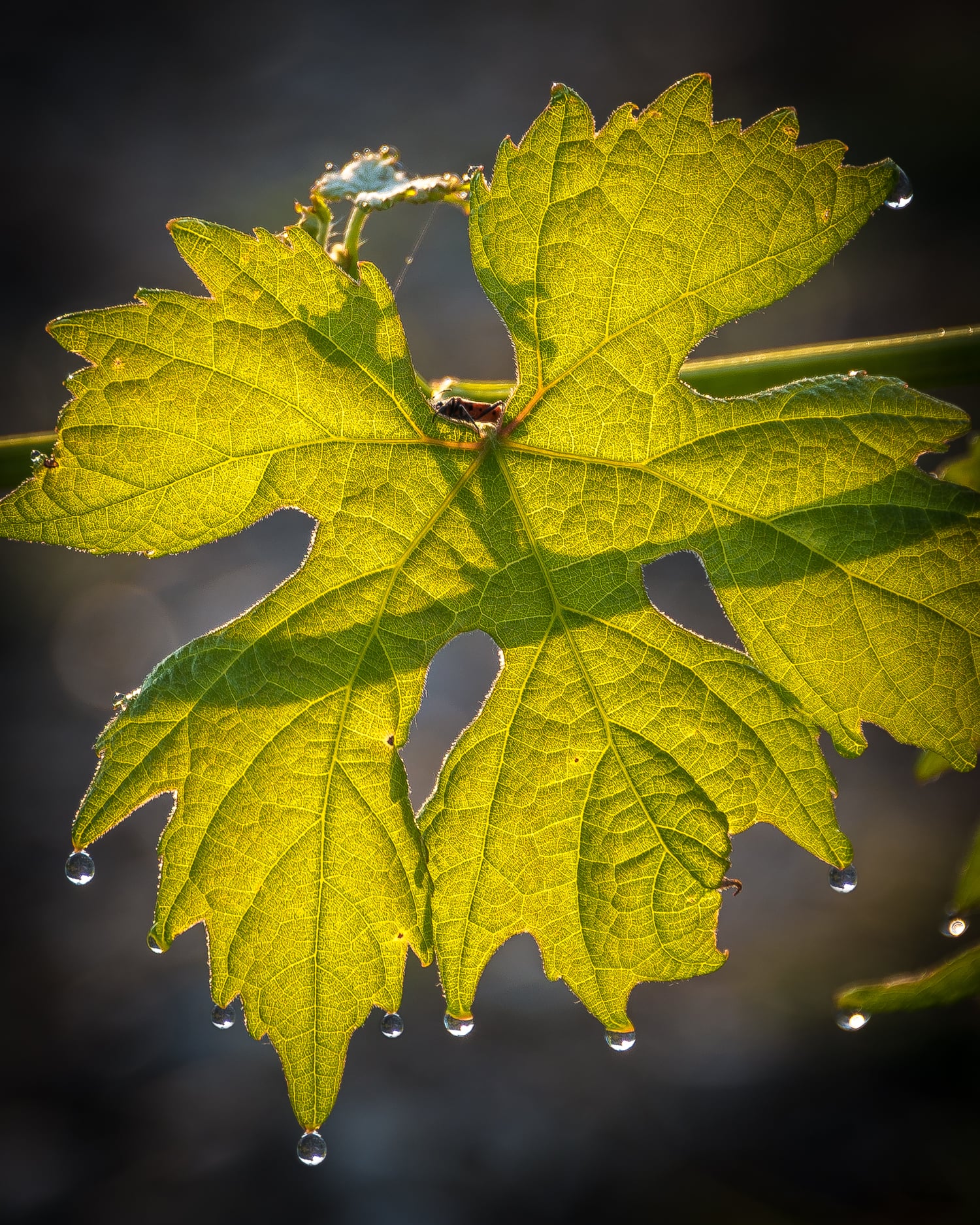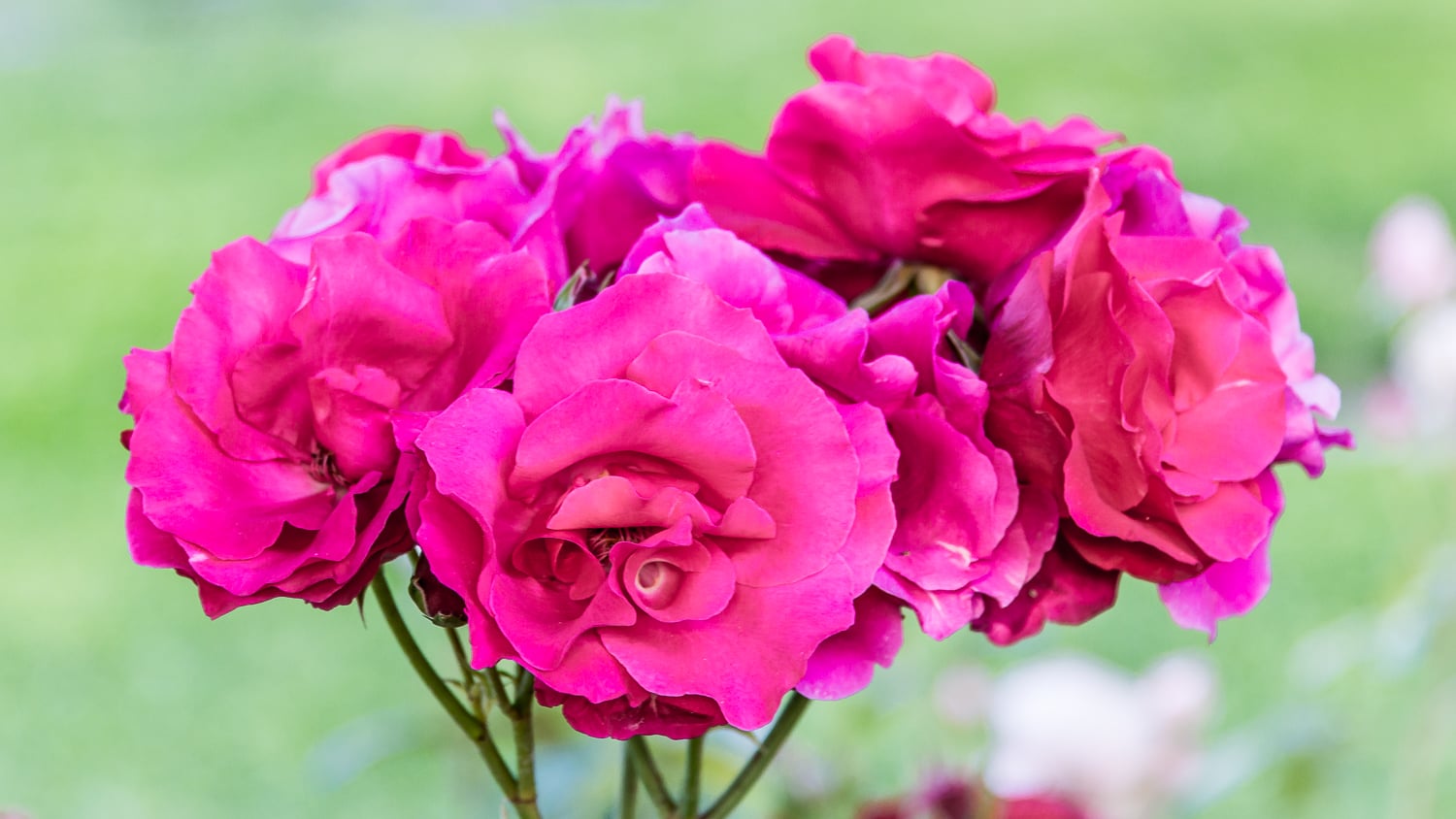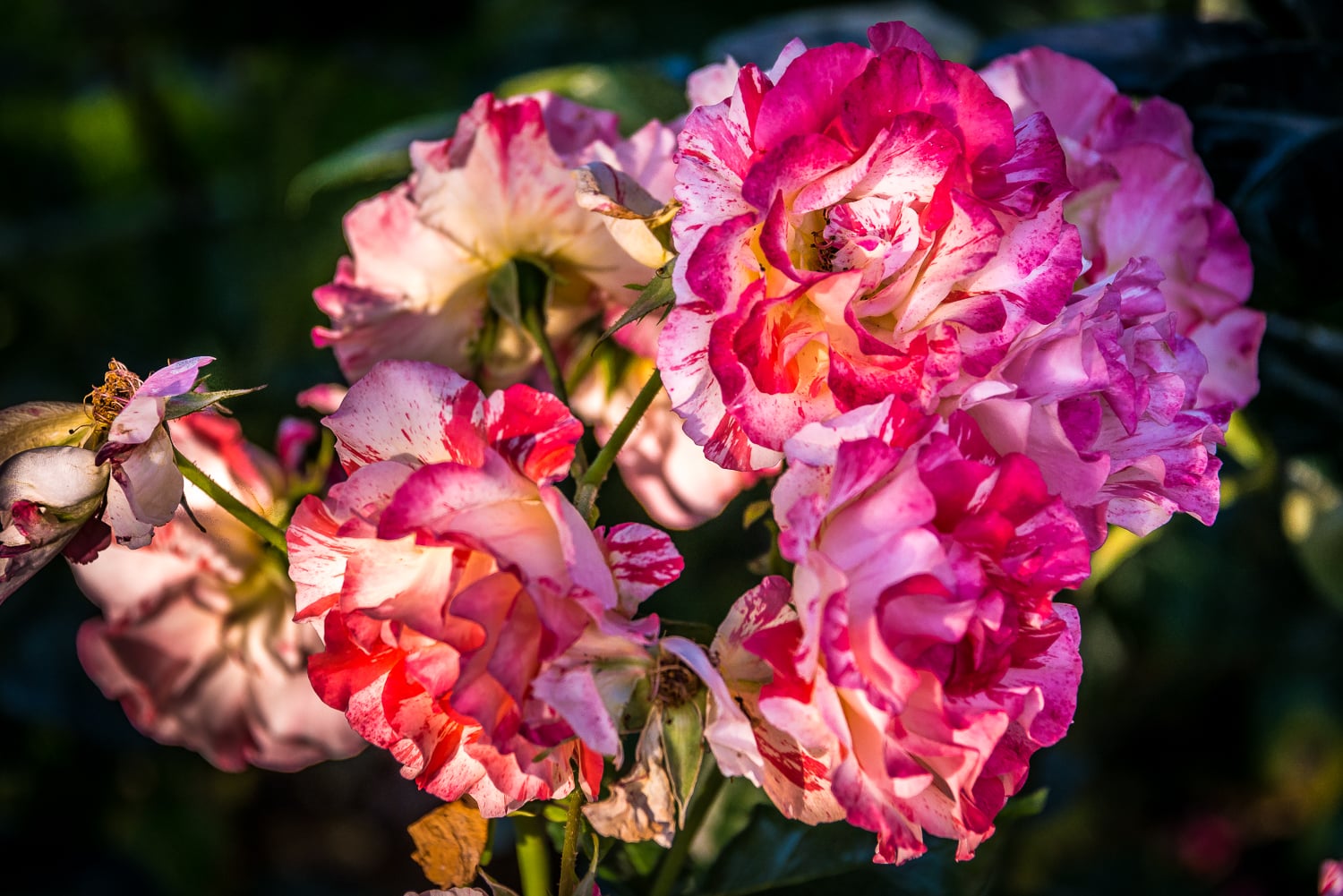Warning: This article may change your life forever!
The Banfi Story
“This is my longest article thus far...but there is a reason. I want you to know all there is to know about the Banfi Experience so that, you too, might enjoy this fabulous place.”
In 1967, the Mariani brothers, John and Harry, traveled to Italy with the aim of importing a wine that would appeal to American tastes (we didn't have much of a wine palate at that time, did we?). They succeeded when they brought Riunite to the US. Remember the slogan, "Riunite on ice, that's nice!"?
[to refresh your memory, click here to see a '70s TV commercial for Riunite]
By 1983 they had become the number one imported wine in America, with 11,000,000 cases of this popular wine having been imported.
With funds in hand (you do the math on the sales of 11,000,000 cases of wine), they headed to Italy in 1977 to purchase around 1,800 acres of land just south of the town of Montalcino. Here, they established Castello Banfi, the centerpiece being the dramatic castle itself, which sits atop Poggio alle Mura, seen here.
From 1978, the goal of the two brothers was to create a state-of-the-art winery, combined with the most advanced science in the vineyards, for the production of premium wines. The Mariani family has succeeded in a big way.
John and Harry purchased properties in other areas of Italy that had established vineyards. But it is interesting to note that the thousands of acres that they purchased in the Montalcino area was mainly barren land, just waiting for them clear and plant.
Their Tuscan estate is most well known for their Brunello wine. Most people would agree that they were instrumental in bringing Brunello to center stage as Italy's premier wine. But, more on wine a bit later.
The Property
The Montalcino-area estate is comprised of over 7,000 acres. In the 18th century, a stone hamlet sprung up surrounding the Castello Poggio alle Mura. That hamlet became the borgo (hotel) and the principal tourist destination of the estate. Below is a photo of the castle, taken many years ago.
[click on an image for a larger view]
Today, the Castello Banfi still sits proud upon its knoll.
Here are a few more photos of the property surrounding the castle.
Here you can see one of the quiet courtyards, as well as the well-presented and educational Etruscan-glass museum.
Whilst the vintner makes the wine, the bees make the honey
Castello Banfi - Il Borgo (The Hotel)
For us, the main attraction of the property is the hotel, or 'borgo'. The Borgo is comprised of 6 rooms, 8 suites, and a junior suite. In this photo from their website, you can see some of the rooms that cascade down the hillside.
And here is my wife, Ellen, as she returns to our room from the pool on a path through rosemary...a heady experience.
That is rosemary…not the woman - that’s my wife Ellen…but the plant, which smells heavenly as it is pruned
Our room was the fabulous Summus Suite. Now, we are not accustomed to staying in suites...and that is not what we had booked. But owner Pam Mariani was very sweet to upgrade our room to this extraordinary lodging.
I was so stunned by our accommodation that I think I took only one interior photo during our stay. That photo is from our living room (there was also a very large bedroom and an expansive bathroom...any of the three rooms exceeded the size of a normal hotel room).
The view from our room of the Tuscan countryside was like a painting by Cezanne!
As I wrote to Pam, "We felt like royalty!"
A full breakfast was made available each morning in the guests-only breakfast room. We opted to dine on the terrace under the glorious Tuscan sun.
And then there was the pool, where we spent the good part of one day.
Cold, refreshing beverages await you!
We were joined at the pool by swifts that skimmed the pool to drink water as they flew by.
And what is that strange bird that kept visiting?
The greenery was well kept by the grounds keepers.
The Vineyards
A portion of Banfi's expansive vineyards surround the castle. Here are a few photos taken during our stroll through the makings of a future Brunello.
In this photo, you can see that olive groves and grape vines align on the Banfi lands.
Dining at Banfi
There are two dining options at Banfi -- La Taverna for a traditional, rustic lunch, and La Sala dei Grappoli for an elegant dinner.
La Taverna
In this photo, the entrance to La Taverna lies just ahead.
La Taverna is a classical Tuscan restaurant in the shade of the medieval castle of Poggio alle Mura. Taverna Banfi is positioned beneath the vaulted arches of the former barrel cellars of the castle, where Brunello once rested in large oak casks.
But today, the menu offers the traditional dishes of Montalcino and Tuscany.
On our 2012 visit to La Taverna, we had a special tasting menu with wine pairings.
We dined well on both of our trips to Banfi. Below are some photos from our meal with our great friends, Debbie and Scott Kennedy. For more on traveling to Italy with friends, see my blog article titled, "Traveling with Friends".
That’s me toasting our Banfi hosts…and a Brunello toast is always in order!
Both Daniela and Erney took care to make sure all was perfect, including the wines that were paired with our meal.
You can see that Erney is serving up our dessert wine, which is called 'Florus' -- it is hard to describe just how yummy this sweet wine is as it crosses the palate.
I have to say that it has surpassed Moscato d'Asti as my favorite dessert wine.
Here you can see the rich golden, straw-colored, dessert wine.
And here is the noon-time detritus that we left behind as we departed to explore the winery.
La Sala dei Grappoli
It is hard to top the fabulous lunch at La Taverna, but you will have to trust me when I say that La Sala dei Grappoli is an elegant treat. I am embarrased to say that I left my camera in our room when we dined there...so please settle for these photos from the Banfi web site.
The Winery
The Banfi winery is state-of-the-art. As new-comers, they were not tied to centuries-old traditions in wine making. So, Banfi defined state-of-the-art wine making through their revolutionary technical research and innovation. And do they keep all of their gained knowledge to themselves? No, they do not. They freely share all they have learned in wine making with their Montalcino-area neighbors, as they believe that it is not a single wine label that makes an area known to wine lovers, but a whole varietal area. As such, Banfi has put Brunello di Montalcino on the world-wide map.
Here are a few photos from our tour of the pristine Banfi winery, which is about 2 miles from Castello Banfi. What you see first is the incoming Sangiovese grape.
Michela was our lovely winery guide. She did an excellent job of explaining such Banfi inspired processes as their dual-material, oak and stainless steel fermentation vats…truly innovative.
Michela explains the intricacies of the Banfi winery
Here you see the hybrid stainless-steel and wood, temperature-controlled vinification tanks.
After vinification, their Brunello di Montalcino is held for a long, silent, two-year rest in wood, where it gains its distinctive characteristics of strength, elegance and longevity. There are more than 7,000 barrels laid out in orderly rows.
They poetically say that this aging in wooden barrels and casks, "make up the heart of Banfi, which beats in the silent and peaceful ambiance surrounding our winery."
I can say no more.
The Kennedys and the Burketts amid the aging Banfi wines
Enoteca
But, there is still the Enoteca, or wine shop. Here, one can taste and purchase wines for shipment home, including wines that are hard for us to find in the U.S.
Banfi’s Enoteca is the most beautiful of all the Italians that we have visited. Scott and Debbie were certainly pleased.
And, let's not forget that you can purchase Banfi's extra-virgin olive oil and balsamic vinegar (read below regarding quantity), also.
But, from whence does the balsamic come? Read on!
Balsameria
Banfi's balsamic is called 'Salsa Etrusca', in honor of the traditional methods of the ancient Etruscans.
While in the Enoteca, ask for a key to the balsamaeria. But be forewarned: prepare to have your head explode with the pungent, sweet goodness of aging balsamic! When you step through that door, as Ellen is doing here...wow!
The Trebbiano and Moscadello grapes are harvested late, when their sugars are concentrated, and they are then gently pressed. The must is filtered and then simmered to reduce it in volume and further concentrate its flavor. After cooling, it is transferred to wooden casks for 4 – 8 months.
In the balsameria, you can read about the process and see the barrels as the salsa balsamica ages. Note the linen cloths that sit above the evaporation hole in the barrel, held down with a circle of silver chain.
During this aging, the process of “balsamization” begins. Successively the balsamic is racked into progressively smaller barrels (from 60 to 25 liters) of different woods, in the order of oak, chestnut, cherry, ash and mulberry, until the filling of the 25 liter barrels. As liquid heaven is removed from the oldest barrels, an equal amount is added from it’s younger neighbor. After about 12 years of aging, you can enjoy the salsa balsamica.
I was flabbergasted to learn from their website that, because of the long process and limited number of barrels, each year only three liters of Salso Etrusca are bottled from the oldest finishing barrels. Because of its very limited production, pick it up in the Enoteca while you are there.
Our thanks to Daniela, Erney, Gabriella, Lucio, Magdalena, Marco, Margherita,
Massimo, Michela ,Paul, Sarena, and all of the others
who made our stay seem one as family, rather than clients.
“You might ask, “Do you drink only Banfi wines?” I’d have to say when it comes to wines of Italy, it accounts for the majority of wines that we drink, both whites and reds. ”
Well, that's Banfi as we see it. A magnificent place...not to be missed when visiting Tuscany. And if you are able, please plan to stay for a couple of nights...or more. I know that you will enjoy it as much as we enjoyed it.
Write if you plan to go. Maybe we can meet for a nice lunch or elegant dinner, just as we did with these friends.
Steve, Ellen, Debbie & Scott
Here are the webpages you will need to learn more about beautiful Banfi:
Ciao for now,
Steve
<<< Subscribe Here to Receive Future Articles >>>
p.s. Well, as I can't resist, one last, parting view of this magnificent retreat...












